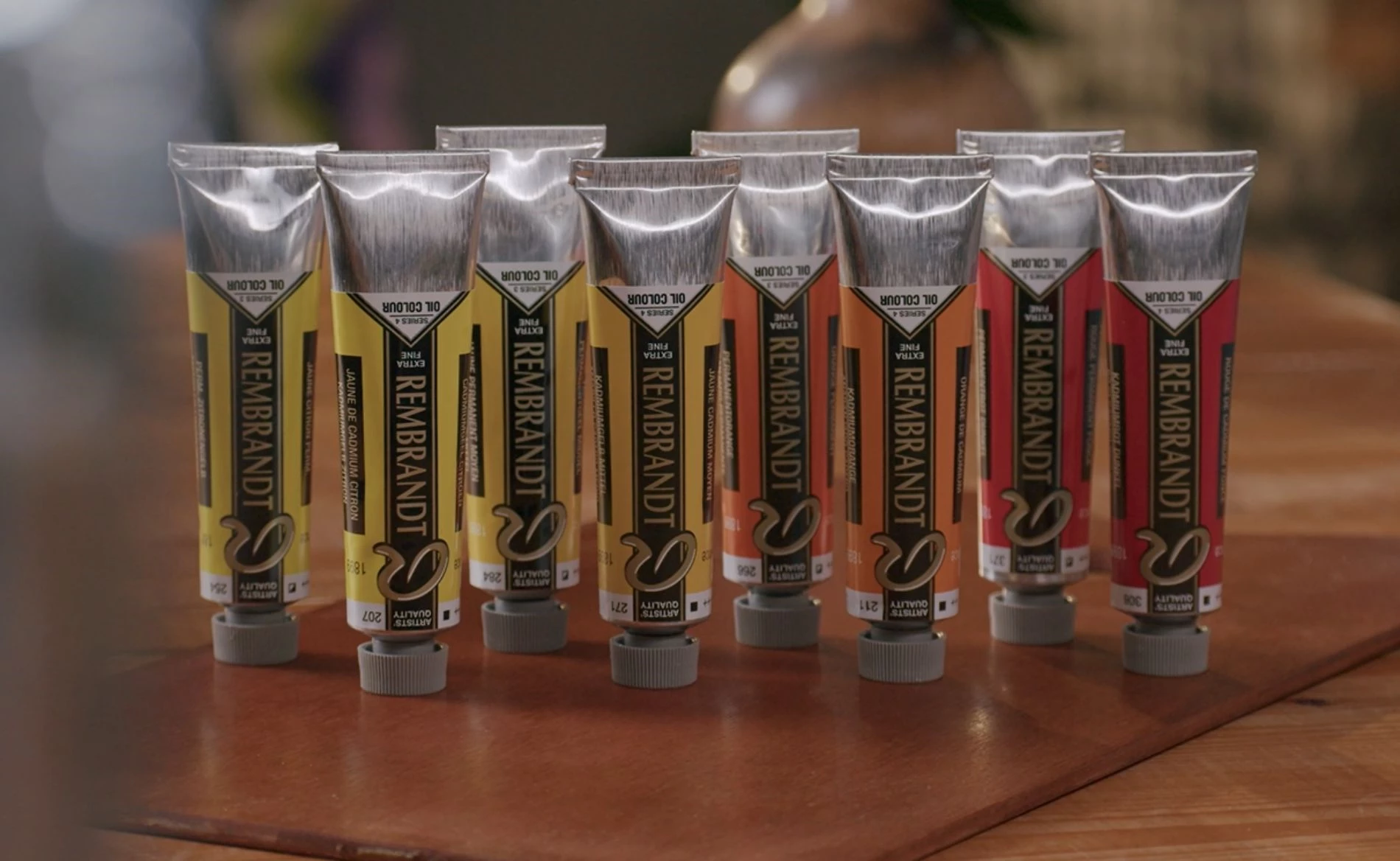
Cadmiums and alternatives
Cadmium shades are intense, highly pigmented and truly opaque oil colours. They feature high tinting strength, achieving maximum results with only small amounts. Then why do we also offer so-called permanent colours as cadmium alternatives? Find out in this blog and watch the video to see the demonstration of their differences.
Cadmium colours
Cadmiums are known for their high opacity, lightfastness and tinting strength. These unique properties make them loved by many artists around the world and an incredibly useful addition to your colour palette.
Then why would they need alternatives? The properties of cadmiums are more extreme than those of other colours. If you want to mix with cadmiums, you only need a fraction of what you would normally use when mixing. Though this makes these paints quite economical in use, it also requires some knowledge and experience. Cadmiums are quite dominant in mixing, which can make them more difficult to use.
Permanent colours
Cadmium alternatives, often called permanent colours, are made to be equal to the cadmium shades in tone and brightness. These shades, however, are much easier to mix and tone down, as is demonstrated in this video. Permanent colours are semi-opaque, which allows them to show a little more of underlying colours or canvas, unlike the extremely opaque cadmiums.
Whether you want to work with cadmiums or permanent colours depends on what you want to achieve in your painting. The video below shows a selection of cadmium colours compared to their permanent counterpart. All shades are shown by themselves and mixed with other colours to show their effects. Keep these examples in mind to help you select the right colours for your next painting.
Assortment
The following cadmium shades and alternatives were used in this video:
- 207 Cadmium Yellow Lemon
- 254 Permanent Lemon Yellow
- 271 Cadmium Yellow Medium
- 284 Permanent Yellow Medium
- 211 Cadmium Orange
- 266 Permanent Orange
- 306 Cadmium Red Deep
- 371 Permanent Red Deep
To highlight the differences in mixes, all colours were mixed with an equal amount of 105 Titanium White and 517 King’s Blue.
Other Oil Colour Blogs

Transparent Oxides
Oil Colour
Whites
Oil colour
Tonal Greys
Oil colour
Cadmiums and alternatives
Oil colour
Red shades
Oil colour
Blue shades
Oil colour
Green shades
Oil colour